Higgs Signal
Estimated reading time: 2 minutesIntroduction
This page contains a summary of the Higgs boson signal reconstruction performance. The Higgs->μμ,γγ and di-jets events are used to quantify the detector performance of the charged particles, the photons, and the jets. And a clear separation between different decay cascades is observed at Higgs->WW* and ZZ* decay modes. The APODIS, a.k.a. CEPCv4 geometry, is used in this analysis, and the Arbor is accordingly modified. More details could be found at arxiv:1806.04992.
Reconstruction Results
Higgs->μμ
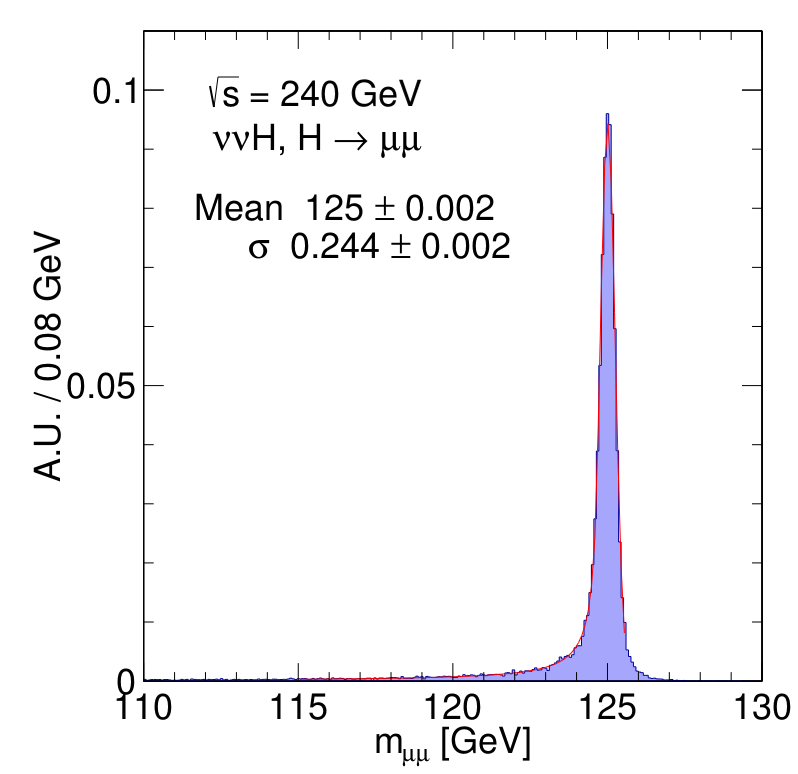
A pair of muons with opposite charge and both have energy higher than 20 GeV is selected. The invariant mass of this pair of muons is reconstructed as the Higgs boson mass.
Higgs->γγ
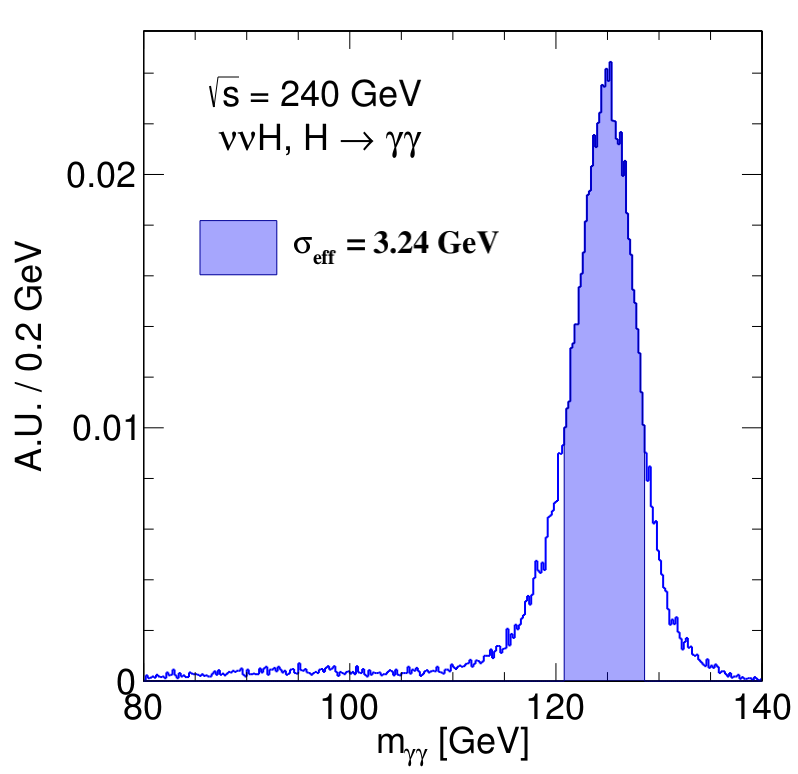
We select two most energetic photons with energy higher than 10 GeV and calculate their invariant mass as the Higgs boson mass. The tail at the left side is caused by the geometry defects and the material before the calorimeter. The width of the distribution is parameterized by the half-width of the narrowest interval containing 68.3% of the distribution.
Higgs->di-jets (bb,cc,gg)
For these Higgs->di-jets events, we collect all the visible final state particles and calculate their invariant mass.
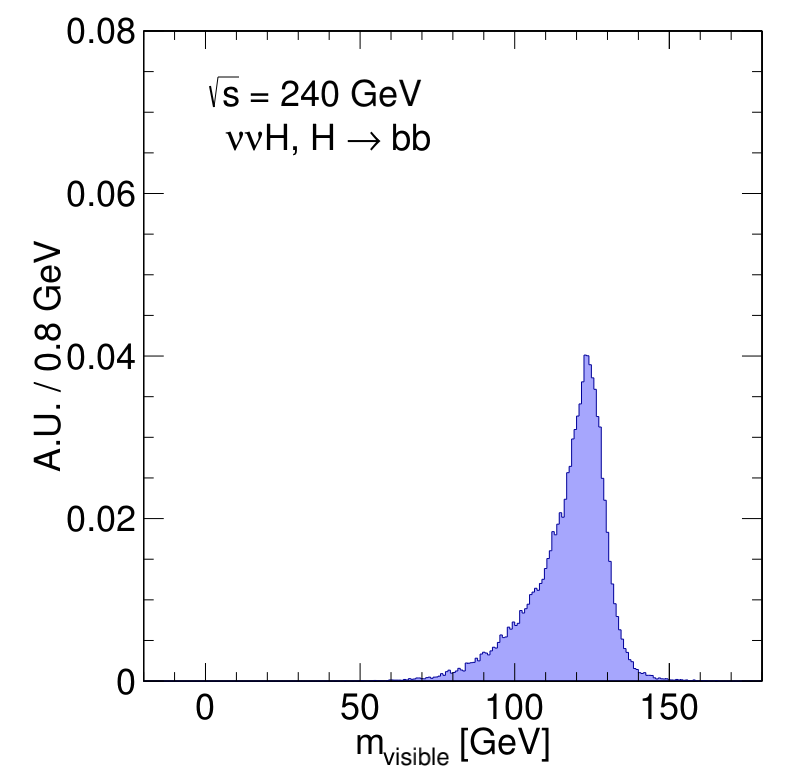
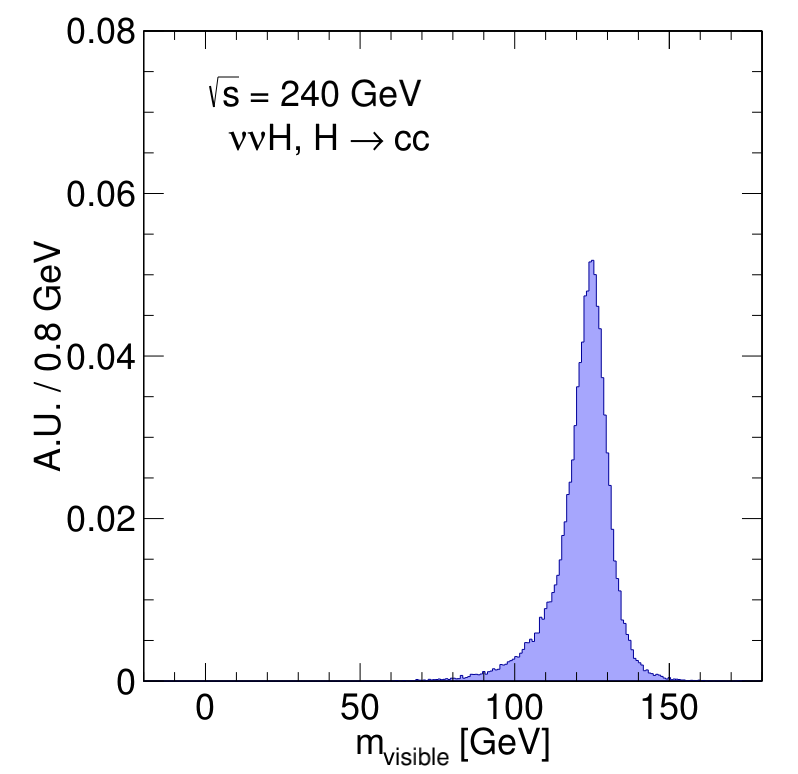
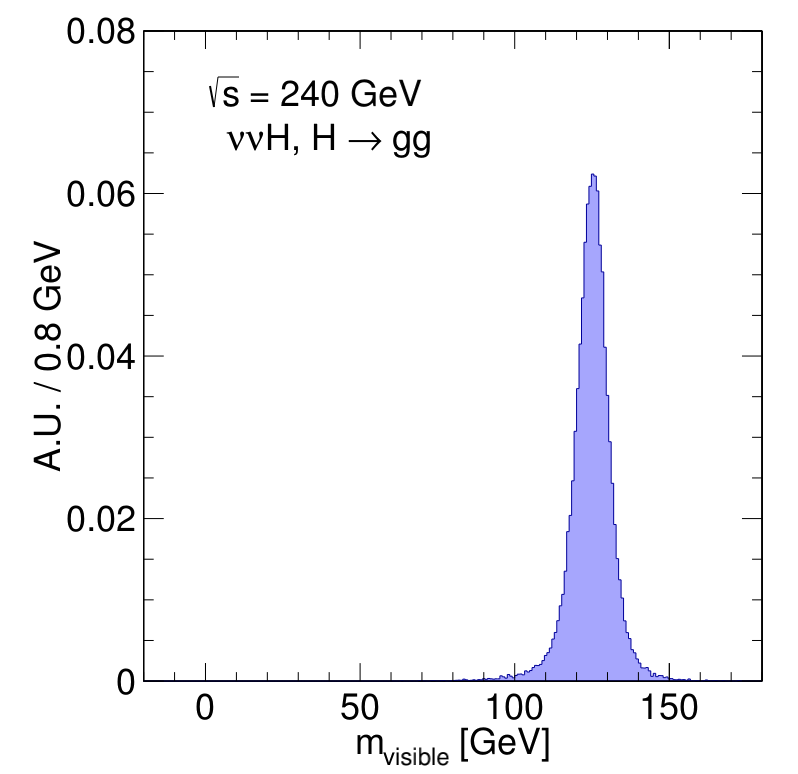
To describe the jet reconstruction performance, a standard event cleaning procedure has been designed, as the Pt_ISR<1GeV, the Pt_neutrino<1GeV and the |Cos(Theta_Jet)|<0.85. After the event cleaning, the accuracy of the reconstructed Higgs boson mass at different Higgs decay modes with jets as final state particles are comparable.

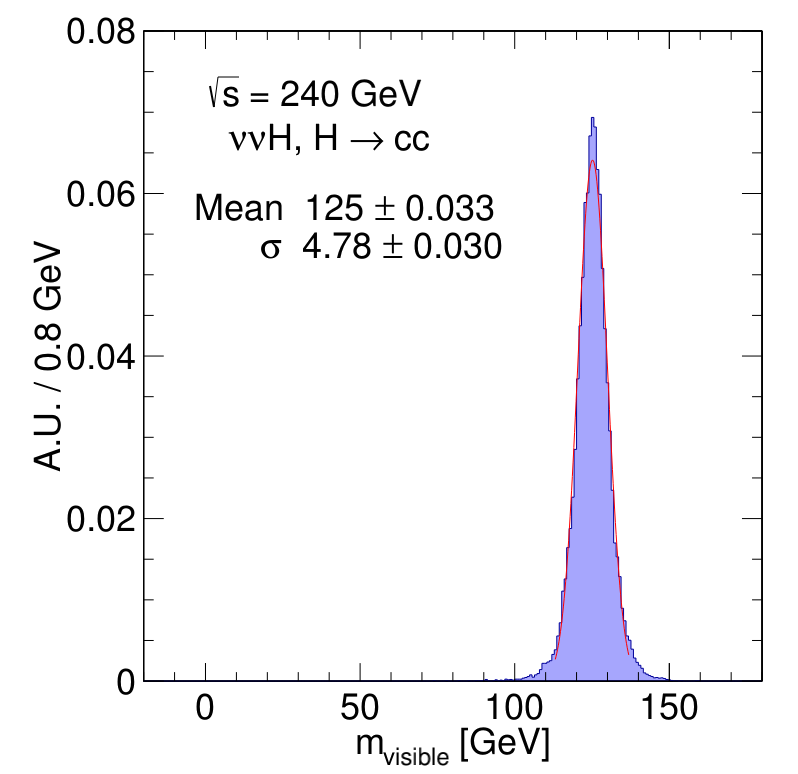
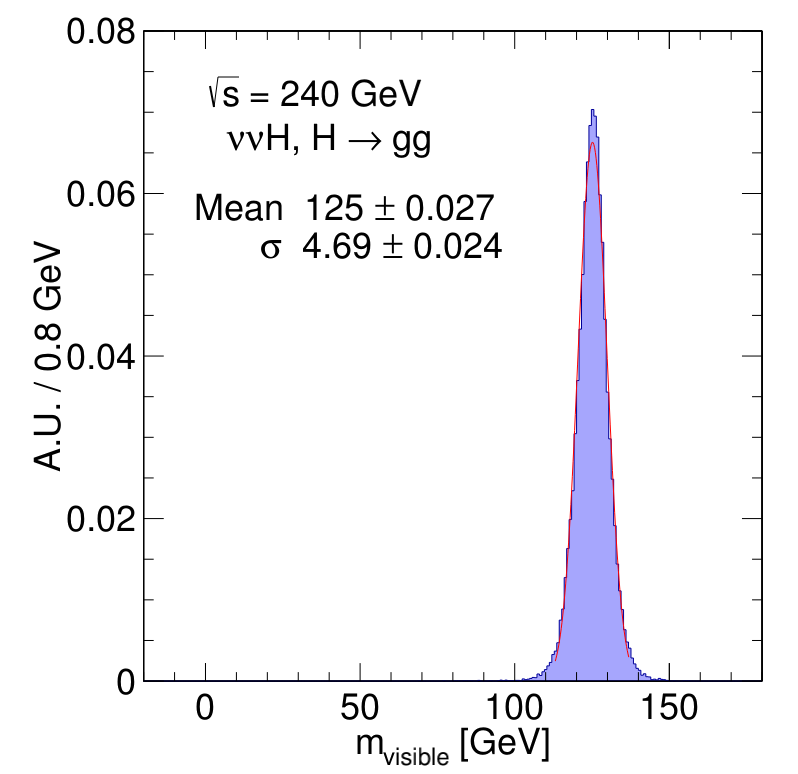
Higgs->WW*
<img src=”/guides/performance/images/Higgs/Hww_240_wocut.png”/ width=”500px”/>
Depending on the decay modes of W and W* (leptonic or hadronic), the total invariant mass distribution is decomposed into different sub-distributions. The main peak at 125GeV corresponding to the events that both W and W* decay into two quarks. The other two stacks corresponding to the events that W or W* decay into a pair of lepton and neutrino.
Higgs->ZZ*
<img src=”/guides/performance/images/Higgs/Hzz_240_wocut.png”/ width=”500px”/>
With the monte calo truth information, the events are classified depending on the decay modes of Z and Z* (visible or invisible). There are four peaks in the distribution. The peak at zero is corresponding to the events that both Z and Z* decay into neutrinos, which contains about 4\% of all the events. The main peak at the expected Higgs boson mass (~125GeV) is corresponding to the events with all the final state particles are visible. The other two peaks are corresponding to the conjugation case that Z-> visible, Z->invisible and Z->visible, Z->invisible.